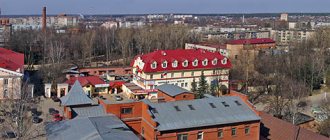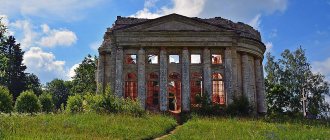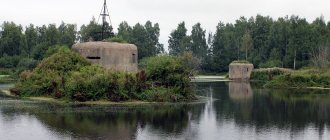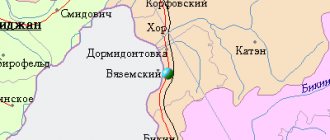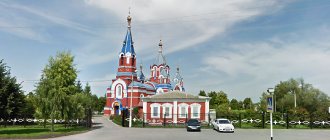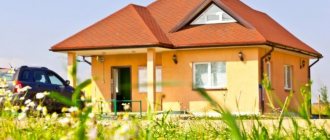M16-Real Estate specialists assessed the Pushkinsky district as a place to live and prepared a detailed review, as well as top properties on the primary and secondary market. Find out the pros and cons of the location, which part of the Pushkinsky district has the most new buildings and where is the best place to buy an apartment.
A few words about real estate in the area
Pushkinsky district is the dream of romantics and aesthetes. Living next to palaces and museum-reserves, with a history dating back to the times of the emergence of St. Petersburg, attracts many sensitive natures.
There are a large number of cottages here - from comfortable to luxury. There are also apartments, the segment is the same. The closer to Tsarskoye Selo or Pavlovsky Park, the higher the price.
The proximity of palace and park ensembles influences the pricing of the Pushkinsky district
However, the Pushkinsky district is not limited to the poetic Pushkin and Pavlovsk, where prices are quite steep. Recently, there has been active development of Shushar and the Tsarskoye Selo Hills area, and this is already a mass market segment.
The supply of the primary market in the area is formed precisely by new blocks in the mass market segment; in Pushkin itself there are very few new buildings.
Tsarskoye Selo Pushkinsky district of St. Petersburg
The settlement was first mentioned in 1501; it was then part of the Nikolsko-Izhora churchyard. Later, the settlement was captured by the Swedes and was under their control from 1609 to 1702, until it was recaptured by Peter I. Peter gave these lands to Prince Menshikov, and he gave them to his bride in 1712. This year is considered the year of Pushkin's founding.
Then a two-story stone palace was built here, around which a settlement was formed from the houses of palace employees. Now the museum-reserve includes the following park complexes: Ekaterininsky, Aleksandrovsky and Babolovsky with parks, palaces and pavilions.
A little history
First of all, it is worth introducing the reader to the history of the city. Initially, the territory where Pushkin is now located belonged to Sweden, and there was an estate of a Swedish magnate called “Sarskaya Manor” on it. After the Northern War, which lasted from 1700 to 1721, it became part of the Russian Empire.
Catherine
Several years after the end of the war, Peter the Great handed over the muse to his beloved Martha Skavronskaya, and it was this event that marked the transformation of the old estate, located in a marshy area, into a luxurious royal residence.
Marta Skavronskaya immediately set about arranging the new property. Construction proceeded quickly, and already in 1725 the residence was renamed Tsarskoe Selo, and the first palace, quarters for servants, etc. were built. After the death of Peter, his beloved ascended the throne under the name of Ekaterina Alekseevna, and a period of prosperity began for Tsarskoe Selo.
Technical innovations began to appear in the town, palaces and parks were rebuilt, and the best gardeners and architects were invited.
It was at this time that the so-called Russian Baroque became especially widespread, in no way inferior in splendor to its European counterpart.
During this period, numerous buildings in different styles appeared in Tsarskoe Selo, the famous Rastrelli built a pavilion called the Hermitage, and the city itself flourished.
After Catherine's death, Tsarskoe Selo was quiet for a long time. Pavel came to power, skeptical of Catherine’s whims, which is why all the construction projects unfinished during her lifetime stopped.
Catherine II
Under Catherine II, buildings in the style of classicism began to appear in Tsarskoye Selo, the city became more aristocratic and quieter.
The nineteenth century became a time of blissful calm for the city: the era of magnificent balls and pretentious luxury was over, but for the royal family the residence remained a favorite place for relaxation and entertainment.
The Tsarskoye Selo Lyceum was built, which was planned as an educational institution for future government workers, but this plan failed miserably - everyone leaving the walls of the Lyceum turned out to be rebels.
XX century
The twentieth century became a difficult time for Tsarskoye Selo. It was here that Nicholas II abdicated the throne and was imprisoned. Also in Pushkin, the first murder of a clergyman took place, which began a series of reprisals against church workers.
During World War II, many luxurious pavilions were destroyed as the city was under occupation. In particular, the famous Amber Room of the Catherine Palace lost its walls made of pure amber. But the city managed to recover from the shock and adopted a new name “Pushkin”, which remains with it to this day. Restoration of many buildings destroyed in the twentieth century is still underway.
Transport accessibility of the Pushkinsky district
- It is best to get here along the Kievskoye or Pulkovskoye highway or along the Rossiya highway. But during peak hours they are often overloaded. Therefore, traffic jams often form here.
- Local residents can easily and quickly reach St. Petersburg from the Detskoe Selo railway station to the Vitebsky station located right in the city center.
- From the Zvezdnaya, Kupchino or Moskovskaya metro stations you can get to Pushkin in a quarter of an hour by public transport or by minibus.
Folk toponymy
Broadway
- an area bounded by Shkolnaya, Zheleznodorozhnaya streets, Tolstoy Boulevard and General Khazov Street. The name appeared in the 1970s, since the entire color of Pushkin’s rock underground of that time lived here.
BAM
- the most populated district of Pushkin, between General Khazov streets and Detskoselsky Boulevard. They named it in those same years by analogy: the area was new and was being built very quickly.
Sofia
- historical area. The name comes from the time of Catherine II, who ordered the construction of a separate exemplary district town here under that name, to which it was planned to relocate the residents of Tsarskoye Selo settlement away from the palace. Before the revolution, here was the spiritual and military center of the royal guard. Borders: Pavlovskoye Highway, Sapernaya Street, Parkovaya Street and Kustarsky Lane.
Krasnoselka
- area near Krasnoselskoe highway.
Lenin Hills
— a hilly park on Shirokaya Street (former Lenin Street).
Semicircle
- unnamed square opposite the district administration.
Twins
— shops in paired houses on the corner of Pushkinskaya and Konyushennaya streets.
Semashka
— district hospital named after Semashko.
Kolonichka
— Kolonistsky Pond, favorite beach.
#City of Pushkin #construction #city
The material was published in the newspaper “St. Petersburg Vedomosti” No. 024 (6622) dated February 11, 2020 under the heading “No match for skyscrapers.”
Share on VKontakte Facebook
Cool
Where to go in Pushkinsky district
The main local attraction is the world-famous Tsarskoe Selo, where the Alexander Palace is located with a huge collection of personal belongings of the last emperor and his wife. But until 2022 it is closed for reconstruction.
No less interesting is the Catherine Palace with its golden enfilade, stunningly beautiful Main Hall, luxurious grand staircase and the mysterious Amber Room. You should also definitely visit the Tsarskoye Selo Lyceum, where the poet Pushkin received his education and other important places.
In the Pushkinsky district of St. Petersburg there is a huge area of green space. There are 6 largest and most luxurious parks in Pushkin: Alexandrovsky; Babolovsky; Buffer; Ekaterininsky; Lyceum; Separate. Tourists definitely need to visit the oldest temple of Pushkin - the Church of the Sign, dating back to the reign of Elizabeth.
Pushkin
One of the main attractions of Pushkin, which attracts most tourists to the city, is the Catherine Palace, namely its pearl - the Amber Room. Despite the fact that the original was lost in Königsberg, the room was restored. Now long lines of tourists line up here to see 6 tons of amber processed by the most skilled craftsmen.
Behind the Catherine Palace lies the Catherine Park. Inside it there are many bizarre things that you can explore all day: a cold bath with agate rooms, a Turkish bath, a ruined kitchen, a “Girl with a Jug” fountain (its original is kept in the Russian Museum) and 26 other noteworthy attractions.
Next to the Catherine Ensemble there is a more modest one - the Alexander Palace and the park of the same name. The palace displays an exhibition of household items of the royal family, because it was here, after the revolution of 1905, that the family of Nicholas II lived. When you go out into the park, pay attention to the Chinese Village. In the 19th century, its houses were used as apartments for the intelligentsia and St. Petersburg residents close to the royal family.
And of course, why come to the city of Pushkin if you don’t see the main attraction - the lyceum building where Alexander Sergeevich studied? The poet was among the first and most brilliant set of lyceum students in 1811. This issue was attended by: Decembrist and public figure Kuchelbecker, poet and publisher Anton Delvig, diplomat Alexander Gorchakov and director of the Imperial Public Library Modest Andreevich Korf. It is interesting that the professors at the lyceum were only 27–28 years old. They managed to get a pedagogical education and go to three-year courses in Europe, returning to Russia with broad, liberal views.
Now the lyceum building has been equipped for the All-Russian Museum of A. S. Pushkin. It includes 6 museums and is one of the largest literary and memorial museum complexes in Europe.
In the Lyceum Garden you can find one of the three city monuments to the poet. Another place in the city associated with Alexander Sergeevich is the Kitaeva House. Pushkin rented this country house immediately after his wedding. Here “Onegin’s Letter to Tatyana” was created, “Tales of Tsar Saltan” and “Belkin’s Tale” were prepared for publication. Such great writers as, for example, Gogol, Zhukovsky and many others came to Kitaeva’s house more than once.
After such a deep excursion into history, you can return to the present day by visiting the Tsarskoye Selo Collection Museum of Contemporary Art. It was founded in the early 90s by artist Alexander Nekrasov, who noticed that the city was severely lacking in modern exhibitions. The center of the exhibition is a collection of works by Soviet-era artists from the Moscow and Leningrad underground. Here you can find works by students of Malevich, Sterligov, Matyushin and many others. In total, the museum has approximately 4,000 exhibits.
Before leaving the city, stop by Gostiny Dvor. This is a monument of federal significance. Inside the attraction there are shopping arcades where you can buy souvenirs for yourself and your friends.
Pros of living in Pushkinsky district of St. Petersburg
How to get there from St. Petersburg?
There are several ways to get to the city of Pushkin: by private transport, by bus or minibus, by train. The latter run from Vitebsky railway station and from the Kupchino railway station. Travel time ranges from 15 to 30 minutes, ticket price ranges from 50 rubles. According to the schedule, there are more than 40 trains a day, so the waiting time for transport will be a maximum of 30 minutes.
The following buses and minibuses go along this route:
- from the Moskovskaya metro station – No. 187, K-287, K-342, K-347a, K-545;
- from the Kupchino metro station - No. K-286, K-347, K-342, K-545a;
- from the Zvezdnaya metro station – No. 179, 186, K-363.
The distance from St. Petersburg to Pushkin is 30 km.
Disadvantages of living in Pushkinsky district
Section materials
December 16, 14:55
A collector was built on Vasilievsky Island for the southern part of the alluvium
December 16, 11:43
St. Petersburg residents complain on social networks about puddles in the city
December 16, 11:25
City chronicle: important in St. Petersburg December 16, 2021
December 16, 10:45
The concept for the development of the northern coast of Neva Bay has been presented
December 15, 19:25

